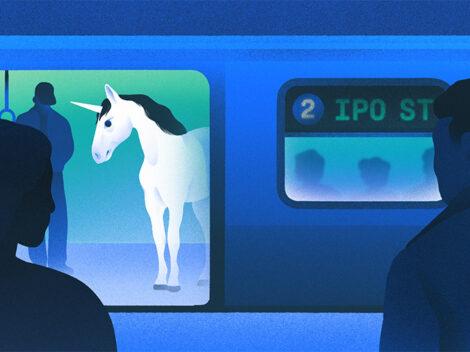In 2018 when SoftBank Vision Fund invested $375 million in Zume, a Silicon Valley startup with a robot-crafted pizza-making service, there were one of two gut responses. First: That’s not going to work out well. Second: Sounds out there, but maybe they’re onto something.
Nearly five years later, it looks like the first response was on target. Zume, which pivoted a few years ago from pizza to sustainable packaging, recently shut down due to insolvency, according to reports.
Search less. Close more.
Grow your revenue with all-in-one prospecting solutions powered by the leader in private-company data.
The closure was the latest in a long string of disappointing outcomes for the Vision Fund, which shook up startupland in 2017 with the first $100 billion investment vehicle — the largest in industry history. A couple years later came the similarly jumbo-sized SoftBank Vision Fund II.
These funds went on to back some notorious flops, like former construction industry unicorn Katerra. Others that are still around are worth a tiny fraction of their former valuations, including companies like WeWork.
To get a sense of the scope of SoftBank flops, we used Crunchbase data to analyze the most heavily-funded U.S. companies 1 that counted the Vision Fund as a lead investor. We then categorized the largest disappointments in three buckets: poor public market performers, defunct companies and low valuation acquisitions.
Public, but far below highs
In the first category, we look at SoftBank-backed publicly traded companies trading far below their initial offering prices or peak private valuations. Below is a list of six that fit that criteria:
WeWork, trading around 21 cents a share today, has to be the leading cautionary tale. SoftBank invested over $10 billion in the shared office space provider over the years, beginning with a late-stage financing in 2017. WeWork’s current market cap is around $170 million.
View, the smart glass maker that raised $1.1 billion from SoftBank in 2018, has also been an exceptionally poor performer, with a market cap of less than $50 million and shares hovering below 20 cents each.
Shuttered or bankrupt
Meanwhile, several heavily funded companies that counted SoftBank as a lead backer have closed their doors or filed bankruptcy. We list four of the most prominent below:
Like Zume, Boston-based Pear Therapeutics’ name got added to the list relatively recently. The digital therapeutics developer announced in April that it filed for Chapter 11 bankruptcy protection. The company had previously struggled to get insurers to pay for its offerings.
Poor exits
Some Vision Fund big bets have also sold to acquirers at steep discounts to their prior valuations.
Fair, a vehicle leasing platform that raised $385 million in equity and $1.7 billion in debt financing in the late 2010s, is a case in point. The company sold last year to Shift, an online used car marketplace, in a deal valued at less than $20 million.
Berkshire Grey, a maker of robotic systems for warehouse automation, also sold at a steep discount, although in this case the buyer was SoftBank itself. After going public via SPAC in 2021 at a $2.7 billion valuation, shares had shed over 90% of their value by late 2022. SoftBank swooped in this March with a deal to take the company private at a $375 million valuation.
Yes, there are successes in there too
While we’re focusing on unsuccessful outcomes here, no one should walk away with the impression that Vision Fund is just a flop-producing machine. They’ve also led rounds for a number of startups that have had a transformative role in their industries, including Uber, Slack and DoorDash.
Prior to the Vision Fund, SoftBank was also known for its early stake in China’s Alibaba. Over the years, the firm reportedly made $72 billion on that investment, which ranks among the most lucrative of all time.
Struggling
While we talk of hits and misses, it’s also true that much of the SoftBank portfolio is in a more ambiguous category. This largely includes companies that raised big rounds in 2020 and 2021 but haven’t closed on funding since.
A sizable number of heavily funded companies have announced layoffs in the past few quarters. This includes mortgage provider Better, ghost kitchen operator Reef Technology, and fast delivery service Gopuff, among a long list of others.
However, while it doesn’t look like these companies are in a position to invite term sheet bidding wars, they are still in business. For those who laid off staff and carried out other cost-cutting measures, it will take a while to parse to what extent these steps have put companies in a better position for long-term viability.
SoftBank Vision Fund invests internationally. We focused on U.S. deals due to our greater familiarity with the businesses, as well as the valuation and exit environment. We also focused on companies that raised a total of $500 million or more in equity funding from investors.↩

Stay up to date with recent funding rounds, acquisitions, and more with the Crunchbase Daily.








![Illustration of 50+ woman on smartphone. [Dom Guzman]](https://news.crunchbase.com/wp-content/uploads/2021/01/Femtech_-300x168.jpg)

![Illustration of pandemic pet pampering. [Dom Guzman]](https://news.crunchbase.com/wp-content/uploads/2021/03/Pets-2-300x168.jpg)

67.1K Followers